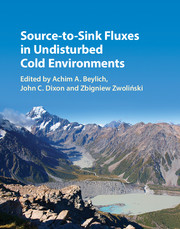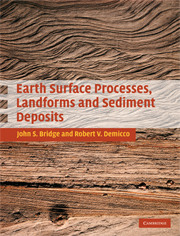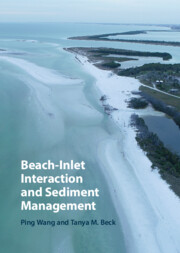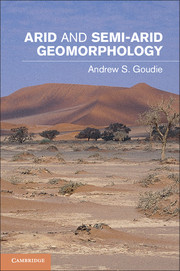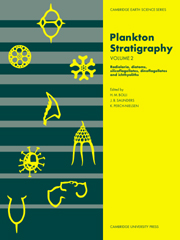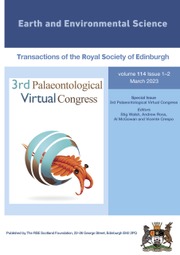Source-to-Sink Fluxes in Undisturbed Cold Environments
Amplified climate change and ecological sensitivity of polar and cold climate environments are key global environment issues. Understanding how projected climate change will alter surface environments in these regions is only possible when present day source-to-sink fluxes can be quantified. The book provides the first global synthesis and integrated analysis of environmental drivers and quantitative rates of solute and sedimentary fluxes in cold environments, and the likely impact of projected climate change. The focus on largely undisturbed cold environments allows ongoing climate change effects to be detected and, moreover, distinguished from anthropogenic impacts. A novel approach for co-ordinated and integrative process geomorphic research is introduced to enable better comparison between studies. This highly topical and multidisciplinary book, which includes case studies covering Arctic, Antarctic, and alpine environments, will be of interest to graduate students and researchers in the fields of geomorphology, sedimentology and global environmental change.
- Presents a synthesis of the key findings from the work conducted by the global IAG/AIG SEDIBUD Programme, which was established with the aim of improving understanding of how processes and environments in cold climate regions will respond to changing climate
- Provides the first quantitative overview of global source-to-sink fluxes in cold climate environments, allowing for direct comparisons with current research
- Introduces a novel approach for co-ordinated and integrative research on denudational Earth surface processes and the effects of climate change in undisturbed cold climate environments
Reviews & endorsements
'… the book provides a large amount of novel information. Ultimately, it is worthwhile to bring this information to international audiences, particularly considering that some of the papers report outstanding scientific advances, with the first global synthesis and integrated analysis of sediment and solute transport in Greenland, Antarctica and the Himalaya. This book could provide great supplementary reading for hydrology science course at university level and will certainly be of special interest to experts and professionals.' Sergey Chalov, Polar Record
Product details
July 2016Adobe eBook Reader
9781316595282
0 pages
0kg
160 b/w illus. 35 maps 37 tables
This ISBN is for an eBook version which is distributed on our behalf by a third party.
Table of Contents
- Preface
- Part I. Solute and Sedimentary Fluxes and Budgets in Changing Cold Climate Environments:
- 1. Introduction to the theme
- 2. The IAG/AIG SEDIBUD (Sediment Budgets in Cold Environments) programme
- Part II. Climate Change in Cold Environments and General Implications for Contemporary Solute and Sedimentary Fluxes:
- 3. The changing cryosphere – implications for solute and sedimentary fluxes in cold climate environments
- 4. Changes in vegetation cover and implications for solute and sedimentary fluxes in cold climate environments
- Part III. Solute and Sedimentary Fluxes in Sub-Arctic and Arctic Environments:
- 5. Contemporary solute and sedimentary fluxes in Arctic and Sub-Arctic environments: current knowledge
- 6. The use of dendrogeomorphology to recognize the spatio-temporal distribution of snow avalanches in northern Iceland – case studies from Dalsmynni, Ljósavatnsskarð and Fnjóskadalur
- 7. A contemporary assessment of sediment and solute transfers in Kärkevagge, Swedish Lapland
- 8. Hillslope processes and related sediment fluxes on a fine-grained scree slope of Eastern Canada
- 9. Sediment and solute transport from Greenland
- 10. Measurements of bedload flux in a high Arctic environment
- 11. Solute and particulate fluxes in catchments in Spitsbergen
- 12. Sediment and solute fluxes at the Igarka field site, Russian Sub-Arctic
- 13. Variability and controls of solute and sedimentary fluxes in Sub-Arctic and Arctic environments
- Part IV. Solute and Sedimentary Fluxes in Sub-Antarctic and Antarctic Environments:
- 14. Environmental impact on contemporary solute and sedimentary fluxes in Antarctica: current knowledge
- 15. Solute and solid cascade system in the Antarctic oases
- 16. Environmental controls on sediment composition and particle fluxes over the Antarctic continental shelf
- 17. Solute and sedimentary fluxes on King George Island
- 18. Dynamics of the Antarctica ice cap
- 19. Solute and sediment fluxes from rivers and streams in the McMurdo Dry Valleys, Antarctica
- Part V. Solute and Sedimentary Fluxes in Alpine/Mountain Environments:
- 20. Chemical denudation in partly glacierized mountain catchments of the fjord landscape in western Norway: contemporary rates, environmental controls and possible effects of climate change
- 21. Sediment delivery from headwater slope systems and relief development in steep mountain valleys in western Norway
- 22. Suspended sediment dynamics in the proglacial zone of the rapidly retreating Castle Creek Glacier, British Columbia, Canada
- 23. Sedimentary fluxes in Himalaya
- 24. Rates of slope and channel processes in the Reintal Valley, Bavarian Alps
- 25. Comparative analysis of sediment routing in two different alpine catchments
- 26. Controls and variability of solute and sedimentary fluxes in alpine/mountain environments
- Part VI. Quantitative Analysis of Solute and Sedimentary Fluxes in Cold Climate Environments:
- 27. Environmental drivers, spatial variability and rates of chemical and mechanical fluvial denudation in selected glacierized and non-glacierized cold climate catchment geosystems: from coordinated field data generation to integration and modeling
- 28. Summary of key findings from Arctic, Antarctic and mountain environments
- Index.

